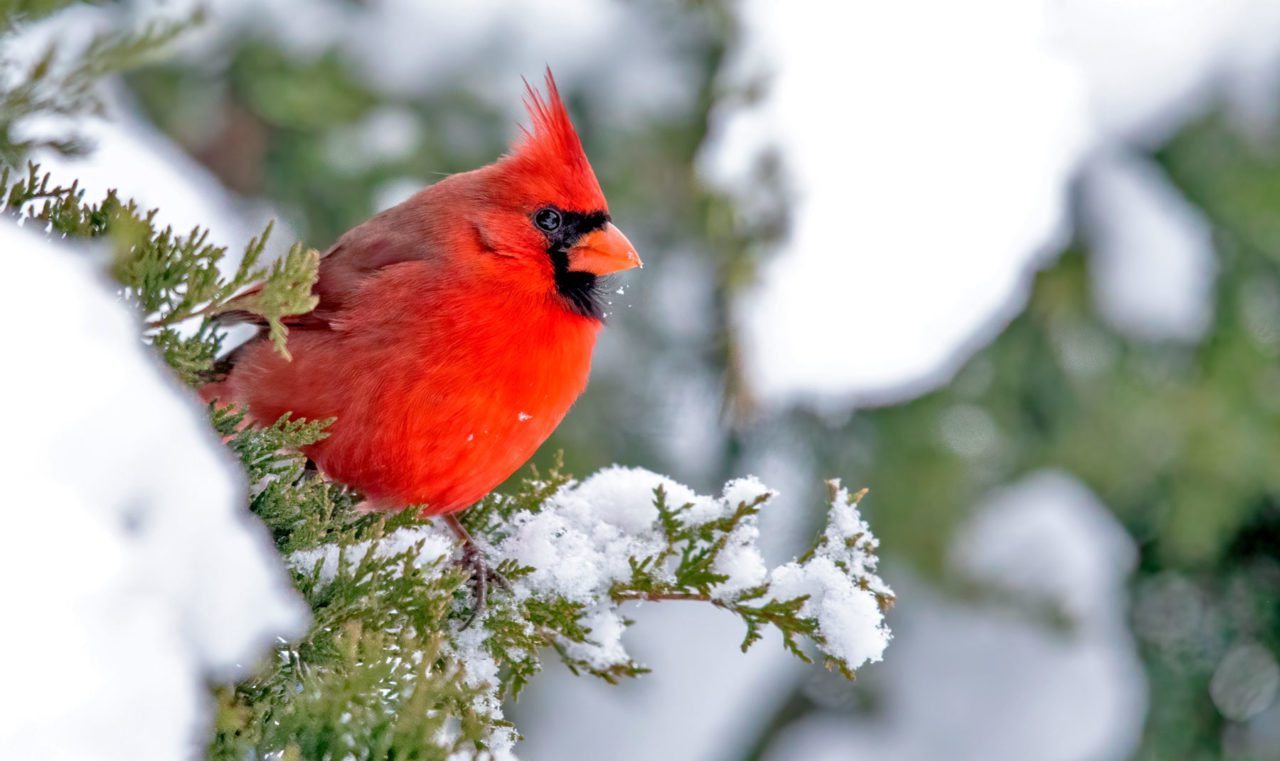Are Cardinals Redder in Winter?
By Staff Writers

Published April 2009; updated December 2021 by Marc Devokaitis. This article also appears in the Winter 2022 issue of Living Bird magazine. Subscribe now.
There’s something stunning about a bright-red male cardinal against a snowy backdrop. Is it just the contrast that makes them look so brilliant, or are they really brighter in winter? The answer has to do with some peculiarities in the way the birds molt.
Like many birds, Northern Cardinals molt their feathers and grow new ones in late summer and early fall, after the breeding season is over and at a time when food is abundant. During autumn people often comment about how ratty cardinals look. Molting cardinals commonly have areas of dark, exposed skin on their head or body, and some even molt their head feathers all at once, rendering the birds bald.
But even after its head is covered in feathers again, a newly molted male cardinal isn’t at his brightest. Many of his new feathers, especially on the neck and back, are tipped with gray. During fall and winter these dusky feather tips slowly wear off, revealing more and more brilliant red.
The birds reach the peak of brilliance by midwinter ahead of the spring breeding season. Against snow-covered conifers, it’s a feast for our eyes, too. The richness of a male’s red feathers may make a difference in his reproductive success: One study found that in rural areas, brighter red cardinals tended to mate earlier and nest in higher-quality habitat—factors usually associated with more offspring.
But for cardinals that live in cities, redder may not be better. A study in 2010 found that in urban areas brighter cardinals had poorer body condition and didn’t produce as many young as more subtly hued cardinals. The study’s authors said the surprising finding may have to do with the prevalence of non-native honeysuckle. The redness in cardinals comes from carotenoids—pigments that occur naturally in foods such as red and purple fruits. Honeysuckle is often planted in urban gardens and woodlands and has red berries that some cardinals feast upon. Honeysuckle berries are high in carotenoids, but unlike native fruits such as dogwood and winterberry, they’re very low in fats and proteins.
“Studies like this show that one of the best things you can do for birds is provide habitat and food using native plantings,” says Emma Greig, project leader of the Cornell Lab of Ornithology’s Project FeederWatch. “Native plants are adapted to the local climate and environment, [and] they also tend to have the most nutritious berries and seeds for the local birds.”

All About Birds
is a free resource
Available for everyone,
funded by donors like you
American Kestrel by Blair Dudeck / Macaulay Library
